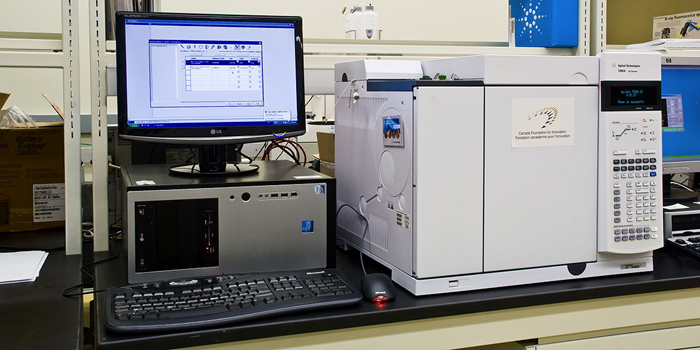
Gas chromatography (GC) is an essential analytical technique used to separate and analyze compounds that can be vaporized. If you’re new to GC or looking to improve your skills, you’ve come to the right place! This comprehensive guide breaks down the essentials of using a gas chromatograph, from understanding the basic principles to optimizing your runs. We’ll also cover some common troubleshooting tips and provide detailed images to help you visualize the process.
Table of Contents
- What is Gas Chromatography?
- How Does Gas Chromatography Work?
- Getting Started with Gas Chromatography
- Step-by-Step Guide to Running a GC Analysis
- Optimizing Your Results
- Common Issues and Troubleshooting Tips
What is Gas Chromatography?
Gas chromatography is a powerful tool in analytical chemistry that separates volatile compounds in a mixture based on their interaction with a stationary phase and a mobile gas phase. Its applications are extensive, from environmental testing to pharmaceutical analysis. GC is highly valued for its sensitivity, accuracy, and ability to separate complex mixtures.
How Does Gas Chromatography Work?
A GC system typically includes the following parts:
- Injector: Introduces the sample into the system.
- Carrier Gas: The mobile phase that transports the sample through the system (often helium or nitrogen).
- Column: A coiled tube containing a stationary phase; it’s where the separation occurs.
- Detector: Identifies and quantifies the separated compounds as they exit the column.
Basic Principle: As the sample vaporizes and mixes with the carrier gas, it travels through the column. Compounds separate based on their interaction with the stationary phase and emerge at different times, detected as “peaks” on a chromatogram.
Getting Started with Gas Chromatography
Before you begin, familiarize yourself with the equipment and ensure that the system is set up properly. Here’s a checklist for setting up your GC:
- Verify Carrier Gas Supply: Make sure there’s a sufficient supply of carrier gas, and that it’s pure.
- Set the Temperature: GC requires different temperature settings for the injector, column, and detector.
- Choose the Correct Column: Different columns are suited for different types of analyses. Choosing the right one for your sample is key to obtaining accurate results.
- Prepare Your Sample: Ensure your sample is clean and in the correct solvent. GC is sensitive, so even small impurities can impact your results.
Step-by-Step Guide to Running a GC Analysis
Now, let’s walk through a typical GC run:
Step 1: Prepare the Sample
Prepare your sample by diluting it with a suitable solvent if needed. Injecting a small, precise amount (usually microliters) is essential to avoid overloading the column. Make sure the syringe is clean and calibrated.
Step 2: Set Up the GC
Turn on the GC and set your temperature program. The temperature of the column should be appropriate for your analytes (e.g., a higher temperature may be needed for higher boiling point compounds).
Step 3: Inject the Sample
Place the sample in the auto-injector (if available) or manually inject it. When manually injecting, do so quickly and smoothly to ensure consistency.
Step 4: Monitor the Chromatogram
As the sample moves through the column, the separated compounds will be detected and displayed as peaks on the chromatogram. Each peak represents a different compound, and its retention time helps identify the compound.
Step 5: Analyze the Data
Once the run is complete, analyze the chromatogram to identify the compounds based on their retention times. Quantify the compounds based on peak areas, which correlate to concentration.
Here’s an example chromatogram for visual reference:

Figure 1: Chromatogram showing separated compounds with retention times.
Optimizing Your Results
Achieving clear, reproducible results requires optimizing several aspects of the GC setup. Here are a few tips:
- Carrier Gas Flow Rate: If the flow rate is too high, the compounds may not separate properly. If it’s too low, your run time will be unnecessarily long.
- Temperature Program: Adjust the column temperature according to the boiling points of your analytes. Using a temperature gradient can improve separation for complex mixtures.
- Injection Volume: Injecting too much can overload the column, resulting in broad peaks and poor separation.
Common Issues and Troubleshooting Tips
Even the best GC systems can run into issues. Here are some common problems and how to solve them:
- Baseline Drift: This can be due to temperature fluctuations or contamination in the detector. Ensure consistent temperatures and regularly clean your detector.
- Broad or Tailing Peaks: Often caused by an overloaded column, improper column length, or issues with injection technique. Try reducing the injection volume and ensuring the column is correctly installed.
- Low Sensitivity: Check for leaks in the system, especially around the injector and detector. Leaks can reduce the amount of sample entering the detector.
Final Thoughts
Using a gas chromatograph effectively involves understanding the principles, setting up the instrument correctly, and refining your method to achieve the best possible separation. With practice, you’ll become a pro at running samples, analyzing chromatograms, and troubleshooting issues as they arise. For any thoughts please reply on the comment section below
REFFERENCE
Skoog, D.A., Holler, F.J., & Crouch, S.R. Principles of Instrumental Analysis. 7th ed., Cengage Learning, 2017.
Pierce, K.E., & Wright, C.W. Practical Guide to Gas Chromatography. CRC Press, 2021.
Harris, D.C. Quantitative Chemical Analysis. 10th ed., Macmillan Learning, 2020.
McNair, H.M., & Miller, J.M. Basic Gas Chromatography. 2nd ed., John Wiley & Sons, 2009.



